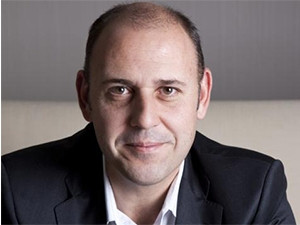Johannesburg, 11 Oct 2016

Speaking after the recent annual Gartner Symposium ITxpo in Cape Town, Paulo Ferreira, director of Enterprise Mobility at Samsung Electronics South Africa, said CIOs of SA's major enterprises attending the event indicated their BYOD approaches had been finalised and policies defined. "It's no longer a question of 'if', but 'how'. Some have settled on company-owned devices, some are splitting their enterprises between company-owned and BYOD, and some are completely BYOD," he says.
With at least 30% of smart mobile devices being sold in SA today destined for use within corporates, recent Samsung South Africa research revealed over 80% of survey respondents offer some or full support for employees who use their own devices for work functions, but that just under 20% had an extensively developed mobile strategy in place.
Ferreira says: "Most local enterprises have made their decisions on device ownership and are now moving to the next phase - strategically managing and securing the mobile enterprise environment."
Enterprises are now seeking to go beyond basic management and security to advanced enterprise mobility management (EMM) solutions that enable simple onboarding, full integration and management of all mobile devices in the company environment, and support fast and cost-effective roll-out of new enterprise applications. "Visitors assessing the Samsung Knox solution suite at Gartner Symposium wanted practical strategies and tools to manage and secure the data on mobile devices, deploy policies and provision apps. There was keen interest in containerisation features, allowing enterprises to separate personal and corporate apps and data on individual devices."
Ferreira notes some enterprises had been challenged in their early EMM implementations, often because their testing phases had not considered the full scope of handset category, OEM, operating systems and applications. "It is crucial that organisations assess what handsets and operating systems are currently within their environments, as well as those dominating the market. If they cannot support the majority of handsets, operating systems and versions of operating systems likely to come into the environment, their EMM projects will remain flawed. In many cases, when running proof-of-concept testing, enterprises will use only three or four handsets to determine whether the EMM solution is fit for purpose.
This is inadequate. Ideally, the EMM strategy and testing should be done in partnership with manufacturers and networks, and with clear statistics around what devices are currently in the environment, and what upgrades and devices will be entering the environment in future."
Enterprises are also seeking to lay the foundations for management and security of a broader ecosystem, including wearables and Internet of things (IOT) devices in future, he says.
"Samsung's Knox defence-grade security platform addresses more than just security and device management - it has evolved and matured to include subsets of offerings such as containerisation features, Knox Customisation, bulk mobile enrolment and cloud-based device management," Ferreira says. "These features resonated with the CIOs looking to advanced EMM."
Share